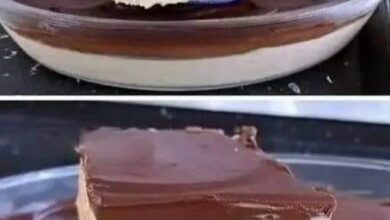Sourdough No-Knead Sandwich Bread Recipe

Introduction
There’s something comforting about a soft, chewy slice of homemade bread—especially when it’s made with sourdough. This no-knead sourdough sandwich bread is the perfect blend of convenience and flavor, delivering that tangy sourdough depth with minimal effort.
If you’re new to sourdough baking or simply want a low-maintenance recipe that doesn’t require hours of hands-on time, this one is for you. Forget the stand mixer or hand-kneading; all you need is a bowl, a spoon, and some patience.
This loaf is ideal for everyday use—whether it’s slathered with butter and jam, stacked with deli meats, or toasted for breakfast. It’s naturally fermented, easy to slice, and stays soft for days.
⏱️ Cooking Time & Servings
-
Preparation Time: 10 minutes (plus overnight fermentation)
-
Resting/Proofing Time: 12–16 hours
-
Baking Time: 45–50 minutes
-
Total Time: ~13–17 hours (mostly inactive)
-
Servings: Makes 1 loaf (about 12 slices)
🧂 Ingredients
For the Dough:
-
3 ½ cups (440g) all-purpose flour or bread flour
-
1 ½ tsp fine sea salt
-
1 cup (240g) active sourdough starter (100% hydration)
-
1 ¼ cups (300ml) lukewarm water
-
1 tbsp honey or sugar (optional, for a touch of sweetness)
-
1 tbsp olive oil or melted butter (optional, for a softer crumb)
For the Pan (optional):
-
Butter or oil for greasing
-
Extra flour or cornmeal for dusting
👩🍳 How to Make No-Knead Sourdough Sandwich Bread
Step 1: Mix the Dough
In a large mixing bowl, combine flour and salt. In a separate bowl, mix the sourdough starter, lukewarm water, and honey. Add the wet ingredients to the dry and stir with a wooden spoon until a shaggy dough forms. Add olive oil or melted butter if using. No kneading needed—just mix until there are no dry spots.
Step 2: Bulk Fermentation (First Rise)
Cover the bowl with a lid or plastic wrap and let the dough rest at room temperature (ideally 68–75°F or 20–24°C) for 12–16 hours. It should double in size and look bubbly on top.
Step 3: Shape the Dough
Lightly flour your hands and a clean surface. Gently scrape the dough onto the surface, fold it a few times to shape into a log or loaf form. Avoid deflating it too much. Transfer to a greased 9×5-inch loaf pan.
Step 4: Final Proof (Second Rise)
Cover loosely and let it rest for 1–2 hours until the dough rises near the top edge of the pan. It should be slightly puffy and spring back slowly when poked.
Step 5: Bake
Preheat your oven to 375°F (190°C). Bake the bread uncovered for 45–50 minutes or until golden brown on top and hollow-sounding when tapped. Internal temperature should read about 200–205°F (93–96°C).
Step 6: Cool
Remove the loaf from the pan and let it cool completely on a wire rack before slicing. This helps set the crumb and avoids a gummy interior.
📝 Notes
-
Flour Variations: You can replace up to 1 cup of white flour with whole wheat or rye for added flavor.
-
Pan Type: A metal loaf pan yields a crisper crust, while glass pans result in a softer exterior.
-
Starter Strength: Make sure your starter is active and bubbly—feed it 4–6 hours before mixing.
-
Don’t Skip the Rest: Letting the loaf cool before slicing ensures a better texture.
-
Storage: Keeps at room temperature for 3–4 days. Freeze slices for up to 1 month.
❓ FAQs
Can I use discard sourdough starter?
No, you need active, bubbly starter for this recipe to rise properly.
Why is my bread dense?
Your starter might not be active enough, or the dough may have under-proofed. Ensure full fermentation before baking.
Can I make this gluten-free?
This recipe was developed with wheat flour. Gluten-free flours require different hydration and techniques.
Can I double the recipe?
Yes, but use two loaf pans and divide the dough evenly.
Is this bread sour?
It has a mild tang, but the sweetness from honey balances it out. If you prefer more sourness, ferment longer or use more starter.
🍞 Nutrition Information
Per Serving (1 slice, based on 12 slices):
| Nutrient | Amount |
|---|---|
| Calories | 140 kcal |
| Carbohydrates | 26g |
| Protein | 4g |
| Fat | 2g |
| Saturated Fat | 0.3g |
| Fiber | 1g |
| Sugar | 1g |
| Sodium | 290mg |
Note: Nutritional values are approximate and vary by ingredients used.
⚠️ Disclaimer
Always enjoy baked goods in moderation as part of a balanced diet. This recipe contains gluten and may include allergens such as wheat or dairy (if butter is used). Individuals with food allergies or dietary restrictions should adjust ingredients accordingly or consult a professional.



